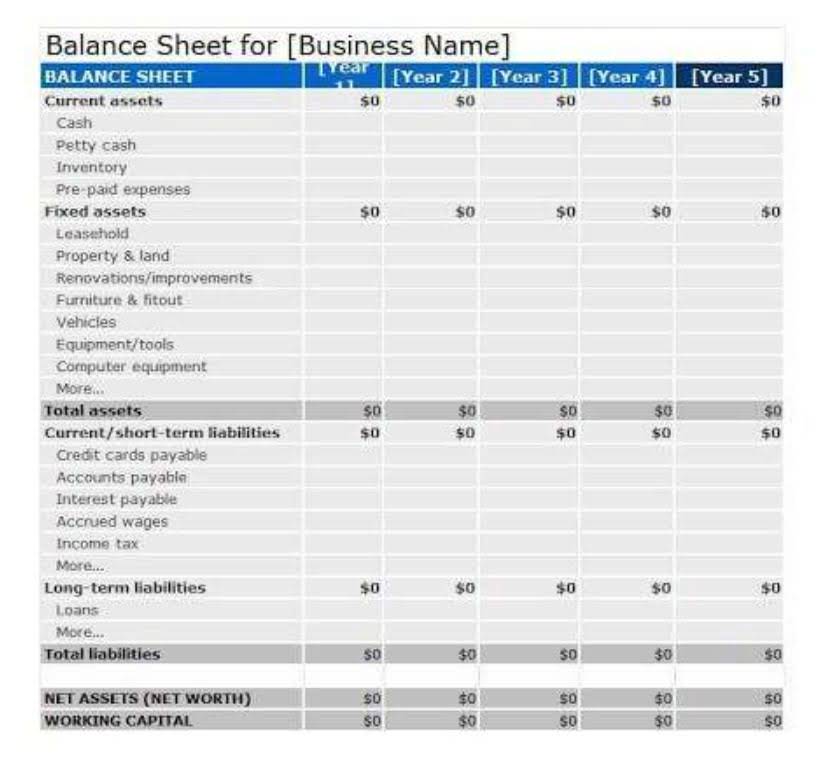If reversing entries are prepared, they happen between Steps 9 and 1. Financial statements such as trading accounts, profit-loss accounts, and balance sheets are prepared following the adjustment of the corresponding fiscal year’s arrears and advances. The accounting cycle refers to the cycle in which the steps of the accounting process revolve. Now, let’s have a closer look on the complete accounting cycle process by performing the following example step by step. Even small businesses would benefit from using the accounting cycle in their business, and if you are using accrual accounting, it’s an absolute must.
Step 5: Journalizing and posting adjusting entries:
- Whether your accounting period is monthly, quarterly, or annually, timing is crucial to implementing the accounting cycle properly.
- Insert yet another column in your ledger that adds your unadjusted trial balance to your adjusting entries.
- For organizations seeking to optimize their financial closing processes, HighRadius’s Financial Close Management is an indispensable tool.
Transactional accounting is the process of recording the money coming in and going out of a business—its transactions. You can then show these financial statements to your lenders, creditors and investors to give them an overview of your company’s financial situation at the end of the fiscal year. Closing entries offset all of the balances in your revenue and expense accounts.
Prepare an Unadjusted Trial Balance
Digital records are also more convenient for storage, retrieval, and backup, making them more effective and dependable than traditional paper records. Technology’s influence in reshaping the traditional methodologies of the accounting cycle is undeniable. The emergence of contemporary accounting platforms has led to automating many aspects of the accounting cycle, establishing a new paradigm for managing financial processes.
Ensures financial statement accuracy and compliance
This step generally identifies anomalies, such as payments you may have thought were collected and invoices you thought were cleared but weren’t. The accounting cycle is a collective process of identifying, analyzing, and recording the accounting events of a company. It is a standard best accounting software for advertising agencies 8-step process that begins when a transaction occurs and ends with its inclusion in the financial statements and the closing of the books. The first step to preparing an unadjusted trial balance is to sum up the total credits and debits in each of your company’s accounts.
An organization must prepare financial statements at the end of each accounting period. In earlier times, these steps were followed manually and sequentially by an accountant. After analyzing transactions, now is the time to record these transactions in the general journal.
That is why the ledger is referred to as the king of all accounting books. Thanks to accounting software, much of this cycle is automated, so you no longer have to post in separate journals, or wait to post to the general ledger (G/L). But even though the cycle is automated, it’s important to understand each of the steps, and why each is necessary. For organizations seeking to optimize their financial closing processes, HighRadius’s Financial Close Management is an indispensable tool.
He has built multiple online businesses and helps startups and enterprises scale their content marketing operations. He worked with TIME, Observer, HuffPost, Adobe, Webflow, Envato, InVision, and BigCommerce. Moreover, if you have inaccurate information, you might inadvertently mislead your lenders, creditors and investors, which can have serious legal consequences. Finally, if your books are disorganized, you might provide inaccurate information when filing taxes. Accruals have to do with revenues you weren’t immediately paid for and expenses you didn’t immediately pay.
The third step in the process is posting journal information to a ledger. Posting takes all transactions from the journal during a period and moves the information to a general ledger, or ledger. As you’ve learned, account balances can be represented visually in the form of T-accounts. Gift cards are a great way for a company to presell its products and to create cash flow. One of the problems with gift cards is that fraudsters are using the retailer’s weak internal controls to defraud the retailer’s customers.
Insert yet another column in your ledger that adds your unadjusted trial balance to your adjusting entries. General ledger accounting uses the double-entry method, where transactions are recorded twice to account for debits/credits and how they offset each other. Debits fall under the left-hand column, with credits in the right-hand column. Adjusting entries are made at the end of an accounting period to adjust those accounts that need to be updated or adjusted. Adjustments include the recording of depreciation expense, the gradual release of prepayments, and the recording of earned revenue from unearned revenues at the end.
Think of the unpaid bill that you sent to the customer two weeks ago, or the invoice from your supplier you haven’t sent money for. If you use accounting software, this usually means you’ve made a mistake inputting information into the system. Just look at what happened to companies such as WikiLawn, Capital Coating, and Activate Your Vision. By doing this, they can ensure fiscal accuracy, optimize decision-making processes, and chart a course toward ongoing success. Robust protective measures safeguard critical fiscal data from potential risks, while digital record-keeping decreases paper usage, contributing to environmental protection.
A general ledger is a critical aspect of accounting as it serves as a master record of all financial transactions. The accounts are closed to a summary account (usually, Income Summary) and then closed further to the capital account. Again, take note that closing entries are made only for temporary accounts. Real or permanent accounts, i.e. balance sheet accounts, are not closed. Temporary or nominal accounts, i.e. income statement accounts, are closed to prepare the system for the next accounting period.
Our secure bank connections automatically import all of your transactions for up-to-date financial reporting without lifting a finger. Book review calls or send messages to get prompt answers to your questions so your financial health is never a mystery. The last step in the accounting cycle is preparing financial statements—they’ll tell you where your money is and how it got there. It’s probably the biggest reason we go through all the trouble of the first five accounting cycle steps.
From the meticulous input of financial data to the generation of reports, the accounting cycle ensures a systematic approach to maintaining financial records. Regardless of the scenario, an unadjusted trial balance displays all your credits and debits in a table. Companies can modify the accounting cycle’s steps to fit their business models and accounting procedures. One of the major modifications you can make is the type of accounting method used.
At the end of the fiscal year, financial statements are prepared (and are often required by government regulation). Finally, you need to post closing entries that transfer balances from your temporary accounts to your permanent accounts. This process is repeated for all revenue and expense ledger accounts. Balance sheet accounts (such as bank accounts, credit cards, etc.) do not need closing entries as their balances carry over. In the first step of the accounting cycle, you’ll gather records of your business transactions—receipts, invoices, bank statements, things like that—for the current accounting period. These records are raw financial information that needs to be entered into your accounting system to be translated into something useful.
To simplify the recording process, special journals are often used for transactions that recur frequently, such as sales, purchases, cash receipts, and cash disbursements. And, a general journal is used to record all those that do not fit in the special journals. For example, a personal loan made by a business owner that does not have anything to do with the business shall not be recorded in the books of the business.
Once you’ve created an adjusted trial balance, assembling financial statements is a fairly straightforward task. The main purpose of the accounting cycle is to ensure the accuracy and conformity of financial statements. Although most accounting is done electronically, it is still important to ensure everything is correct since errors can compound over time.
A period is one operating cycle of a business, which could be a month, quarter, or year. The last step in the accounting cycle is to make closing entries by finalizing expenses, revenues and temporary accounts at the end of the accounting period. This involves closing out temporary accounts, such as expenses and revenue and transferring the net income to permanent accounts like retained earnings. An adjusted trial balance may be prepared after adjusting entries are made and before the financial statements are prepared. This is to test if the debits are equal to credits after adjusting entries are made.
The unadjusted trial balance is then carried forward to the fifth step for testing and analysis. With double-entry accounting, each transaction has a debit and a credit equal to each other, common in business-to-business transactions. Companies will have many transactions throughout the accounting cycle.
The accounting cycle is a multi-step process designed to convert all of your company’s raw financial information into financial statements. The eight-step accounting cycle process makes accounting easier for bookkeepers and busy entrepreneurs. It can help to take the guesswork out of how to handle accounting activities. It also helps to ensure consistency, accuracy, and efficient financial performance analysis. At the end of the accounting period, a trial balance is calculated as the fourth step in the accounting cycle. A trial balance tells the company its unadjusted balances in each account.
Interpreting financial statements helps you stay on top of your company’s finances and devise growth strategies. When the accounts are already up-to-date and equality between the debits and credits have been tested, the financial statements can now be prepared. The financial statements are the end-products of an accounting system. The accounting process starts with identifying and analyzing business transactions and events. Not all transactions and events are entered into the accounting system. The post-closing trial balance is created after the completion of the closing procedure.
These could be any events that affect the company’s finances, such as sales, purchases, investments, expenses, etc. Whether your accounting period is monthly, quarterly, or annually, timing is crucial to implementing the accounting cycle properly. Mapping out plans and dates that coincide with your accounting deadlines will increase productivity and results. Completing the accounting cycle can be time-consuming, especially if you don’t feel organized. Here are some tips to help streamline the bookkeeping process and save you time. An example of an adjustment is a salary or bill paid later in the accounting period.
After almost a decade of experience in public accounting, he created MyAccountingCourse.com to help people learn accounting & finance, pass the CPA exam, and start their career. Throughout this section, we’ll be looking at the business events and transactions that happen to Paul’s Guitar Shop, Inc. over the course of its first year in business. Some textbooks list more steps than this, but I like to simplify them and combine as many steps as possible. He’s a co-founder of Best Writing, an all-in-one platform connecting writers with businesses.
Preparing the trial balance is the fourth step of the accounting cycle. A trial balance is prepared using the ledger account balances following the preparation of the ledger accounts. After determining the accounts involved, the next step is to journalize the transaction in a Journal Book.
This is the point where you would also make any depreciation entries and enter payroll or other expense accruals. The purpose of these journals is to provide the details of the balance that you will later transfer to the G/L. Depending on where you look, you can find the accounting cycle described in 4 steps, 5 steps, even 10 steps. Adjusting entries are made for accrual of income, accrual of expenses, deferrals (income method or liability method), prepayments (asset method or expense method), depreciation, and allowances.
Missing transaction adjustments help you account for the financial transactions you forgot about while bookkeeping—things like business purchases on your personal credit. The accounting cycle is meant to be followed in order, like driving directions. Each step relies on the ones before it, so if you skip a step or two, you risk getting lost and capturing inaccurate financial activity.
Like everything else about bookkeeping and accounting, the accounting cycle is a process that can help you categorize and enter your transactions properly. Using the accounting cycle also helps to ensure that you and your accountant both have a complete and accurate overview of the financial health of your business. A tool that can be helpful to businesses looking for an easier way to view their accounting processes is to have drillable financial statements. This feature can be found in several software systems, allowing companies to go through the accounting cycle from transaction entry to financial statement construction. Read this Journal of Accountancy column on drillable financial statements to learn more.
Closing is usually a good time to file paperwork, plan for the next reporting period, and review a calendar of future events and tasks. Every individual company will usually need to modify the eight-step accounting cycle in certain ways in order to fit with their company’s business model and accounting procedures. Modifications for accrual accounting versus cash accounting are usually one major concern.
Get access to experts in maximizing profits and visibility to make better business decisions. Download our free cash forecast tool and contact Ignite Spot to get a better handle on your company’s financial https://www.bookkeeping-reviews.com/ outlook. One mistake this year can impact your financial reporting in the long run. The process is pretty comprehensive, so how do you go about making your way through the accounting cycle?
If your business uses the cash accounting method, you can still follow the cycle, but you can eliminate some of the steps such as adjusting entries. Companies might employ multiple accounting periods, but it’s crucial to note that each period solely reports transactions within that time frame. If the accounting period extends to a year, it is also termed a fiscal year. Publicly traded firms, mandated by the SEC, submit quarterly financial statements, while annual tax filings with the IRS necessitate yearly accounting periods. Identifying and analyzing transactions is the first step in the process. This takes information from original sources or activities and translates that information into usable financial data.
At the end of the accounting period, some expenses may have been incurred but not yet recorded in the journals. The accounting cycle, also commonly referred to as accounting process, is a series of procedures in the collection, processing, and communication of financial information. It involves specific steps in recording, classifying, summarizing, and interpreting transactions and events of a business entity. The accounting cycle is started and completed within an accounting period, the time in which financial statements are prepared.
Your accounting type and method determine when you identify expenses and income. For accrual accounting, you’ll identify financial transactions when they are incurred. Meanwhile, cash accounting involves looking for transactions whenever cash changes hands.
You offset the balances using something called “retained earnings.” Essentially, this is the profit or loss for the year that is “retained” in your business. Generally accepted accounting principles (GAAP) require public companies to utilize accrual accounting for their financial statements, with rare exceptions. Many companies will use point of sale technology linked with their books to record sales transactions. Beyond sales, there are also expenses that can come in many varieties.
The management can leverage these perspectives to identify growth opportunities, tackle challenges, streamline operations, and execute effective fiscal strategies. You might find early on that your system needs to be tweaked to accommodate your accounting habits. Searching for and fixing these errors is called making correcting entries.










